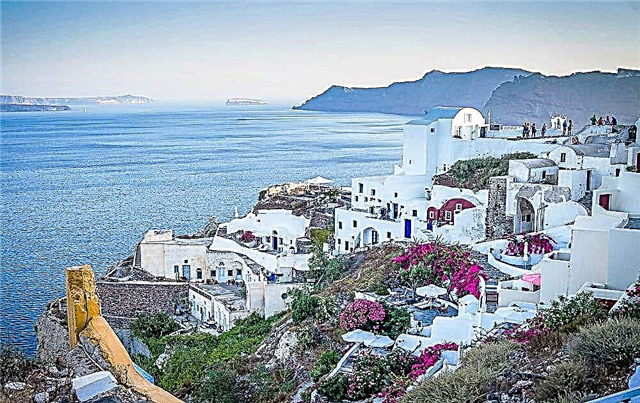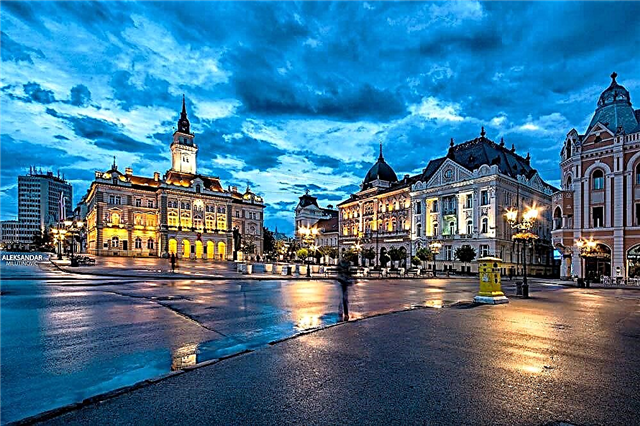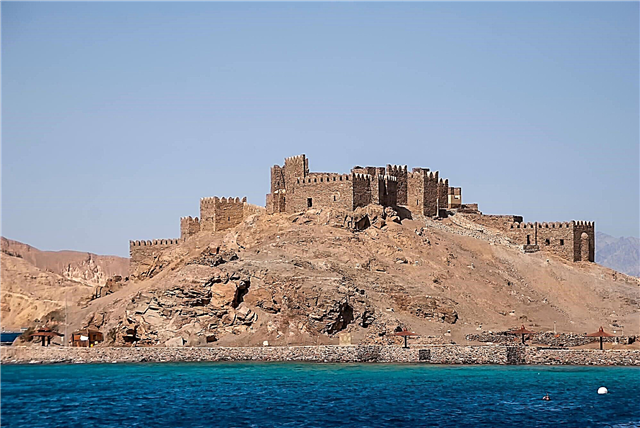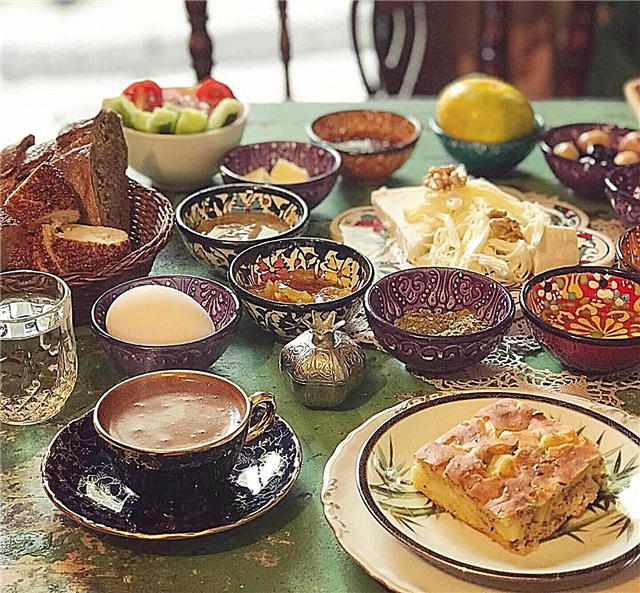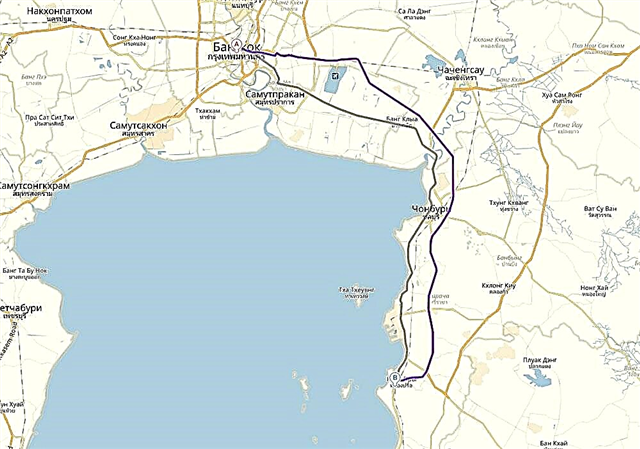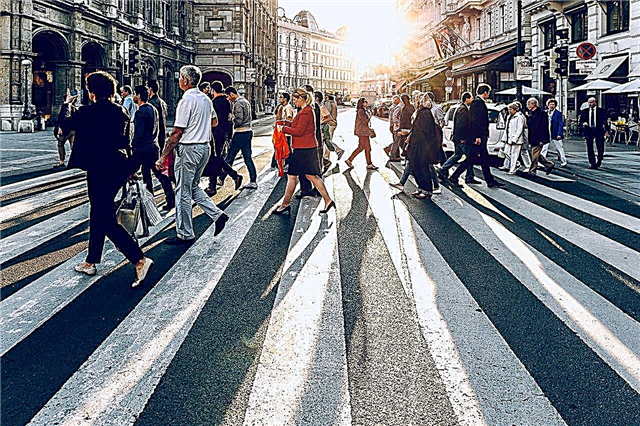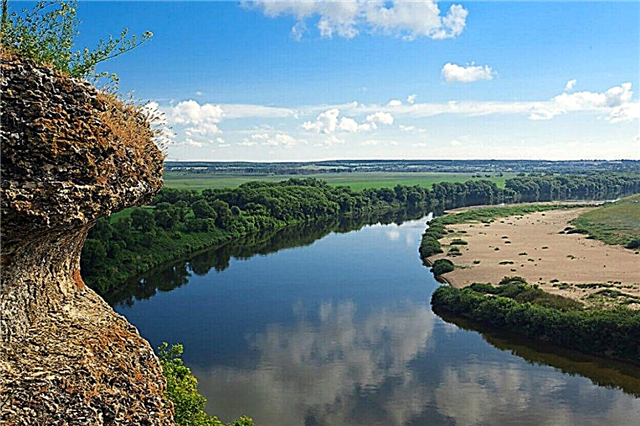Lipetsk region was created only in 1954, but its lands have been settled since ancient times. Accordingly, the history of the region is rich and interesting for tourists. Unique examples of church architecture occupy an important place among the architectural monuments. Particularly noteworthy is the city of Zadonsk, which received the name "Russian Jerusalem". The history of the region is closely connected with the names of prominent scientists and creative personalities - Prishvin, Plekhanov, Semenov-Tyan-Shansky, Tolstoy, Bunin, Zhukov. Nature lovers will love the unique landscapes of the Galichya Gora nature reserve and the incredible riot of vegetation on the territory of the Meshchersky arboretum. Handicrafts - the famous Romanov toy and Yelets lace - will help to preserve and embellish the impressions of the journey across the Lipetsk land.
The most interesting and beautiful places in the Lipetsk region
List, photos with names and descriptions of the best attractions in the region!
Reserve "Galichya Gora"
Natural state reserve on the banks of the Don, in the center of the Lipetsk region. It covers an area of about 230 hectares and is the smallest in Russia. It was organized in 1925 to protect the valuable vegetation of the region. It combines several natural objects - the Vorgolsky rocks on the banks of the Vorgola river, rocks and caves called Voronov stone, Morozov and Galichya mountains, the Plyushchan forest area and the Bykova neck steppe zone.

Park "Kudykina Gora"
The famous park, where the whole family comes to relax, is located near the village of Kamenka. Its vast territory is divided into several thematic zones. There are also children's attractions, and a reserve with exotic animals, and a wooden fortress, inside which the City of Masters is located, and a source of mineral water, and a small lake with a beach, and much more. For tourists, guest houses have been built and a tent city has been organized.

The Nechaevs' estate with the Shukhov tower
The main attraction of the village of Polibino is a magnificent manor complex, which was finally formed by the end of the nineteenth century. It belonged to well-known in Russia and very wealthy patrons of the arts Nechaevs. It included a luxurious manor house, an English park with ponds, outbuildings and a steel mesh water tower - the brainchild of the famous engineer Shukhov. Later, he built a similar tower, only intended for radio communications, in Moscow on Shabolovka.

Station "Lev Tolstoy"
Once this railway station was called Astapovo. And the sad event brought her world fame - here in 1910, after a week-long stay in the house of the station superintendent, Leo Tolstoy died. Subsequently, both the station and the village were renamed in his honor, and a museum was opened in the building itself. The interior of the room in which the writer spent his last days remained intact - a bed, a table with medications and stopped at 6:05.

Ascension Cathedral in Yelets
A majestic 5-domed church in the historical part of Yelets, on Red Square. Built in the century before last to replace the older Cathedral of St. Nicholas the Wonderworker. In its architecture, the styles of Russian and Byzantine architecture can be traced, as well as individual elements of classicism. The height of the temple together with the crosses is 74 meters, the length reaches 84 meters. There are 3 spacious halls inside; a three-level carved iconostasis and numerous murals are worthy of special attention.

Nativity of Christ Cathedral in Lipetsk
The main spiritual center of Lipetsk - the venue for all the most important divine services - is located on Cathedral Hill and is clearly visible from anywhere in the city. The construction of the church in the style of classicism, and then the bell tower, was started in 1791 at the expense of a wealthy landowner Viljaminov and lasted more than 50 years. The cathedral contains valuable relics - the icon and cassock of the holy Martyr Uar, the Lipetsk Passionate Icon of the Mother of God.

Church of the Sign in Veshalovka
The construction of a red-stone building in the pseudo-Gothic style in the village of Veshalovka is attributed to the famous Russian architect Bazhenov, the creator of the palace complex in Tsaritsyno. Only he worked in a similar style in Russia at the end of the 18th century, when the Znamensky Church was erected. Its construction was initiated by the owner of the estate, Yakov Tatishchev. For 80 years the temple was inactive and only in 2003, after a lengthy restoration, was it reopened.

Meshchersky arboretum
A delightful corner of nature, the largest experimental breeding station in Russia. It is located in the village of Barsukovo, on the site of the former estate of Dmitry Artsybashev, a prominent scientist-dendrologist, specialist in decorative gardening. It was he who was the founder of the collection of rare species of trees and exotic plants, on the basis of which the Meshchersky arboretum was later created. His visiting card is lilac blooming in May, represented by 96 varieties.

Ryazanka manor
The manor house in Ryazanka on the outskirts of the Lipetsk region is famous for the fact that in 1827 the outstanding traveler and scientist Semenov-Tyan-Shansky was born here and spent his entire childhood. A one-story wooden building with a mezzanine, erected on a solid stone foundation, has been perfectly preserved to this day. As well as two outbuildings, some outbuildings and a park with rather rare exotic trees and shrubs. A museum of the renowned scientist was opened in the estate.

Lower park in Lipetsk
The foundation for the breakdown of this park was the springs with healing water discovered by Peter the Great, on which a sanatorium was later built. Today, residents of not only Lipetsk, but also of the whole country come here for treatment. The park is also famous for its monuments, green area, represented by more than 50 species of trees and shrubs. There is a planetarium, a zoo, a cafe, numerous attractions, theatrical performances and concerts are regularly held.

Metro in Lebedyan
A small town in the Lipetsk region could acquire its own metro. The initiator of its construction in 1989 was a local resident Leonid Mulyarchik. Alone and at his own expense, in 20 years, he dug an underground 200-meter tunnel connecting the railway station and one of the city's districts. The reliability of the structure has been confirmed by specialists. Unfortunately, after the death of Mulyarchik in 2011, work on further construction was not continued.

Zadonsk Nativity of the Mother of God Monastery
An active male monastery in the city of Zadonsk on the banks of the Don. It was founded at the beginning of the 17th century by two elders-monks Gerasim and Cyril. Its main shrines are the relics of St. Tikhon of Zadonsk and a life-giving spring with a font. After the revolution, the monastery was disbanded and began to be restored only in 1988. Today, on its 7.5 hectare territory, there are seven churches, a bell tower, a refectory building, outbuildings, workshops, residential buildings and bishops' chambers.

SK "Forest Park"
A sports complex in a forest 3 km from Zadonsk is an excellent place for family recreation at any time of the year. There is a huge rope town with interesting routes of varying difficulty levels, trolls, a climbing wall, sports equipment rental, a swimming pool, an ice rink, ski and tubing tracks, gazebos, barbecues and beach recreation. Those who wish can stay in a hotel complex with comfortable rooms and a number of useful services.

Troekurovsky monastery
An active nunnery in the village of Troekurovo. The date of its foundation is considered to be 1857. The initiator of the formation of the first women's community in the village was the Reverend Hilarion of Troekurovsky.The main shrines of the monastery are the relics of Hilarion and the icon of the Mother of God called "Revealed". Today the territory of the monastery includes 4 churches, a bell tower, a monastery building, a water tower, residential and utility buildings.

Factory "Yelets lace"
Among the folk crafts of Russia, a special place belongs to the art of making lace. The factory in Yelets has been producing exquisite natural products since 1801, which are famous far beyond the borders of the country. These are bed linen, finishing of towels, tablecloths, women's and children's clothing and much more. During organized excursions to the factory, everyone is introduced to the history of the enterprise and the technology of lace weaving, both manually and by machine.

Kurapov rocks
An amazing picturesque place in the village of Kurapovo, where not only residents of Lipetsk, but also residents of neighboring regions come to rest. The crystal clear Beautiful Sword carries its waters here between the 100 million years old limestone slabs coming out to the surface. They are formed by compressed remains of sea shells and animals from the ancient ocean. There are rapids here and there on the river. Nearby there is a dense forest, popularly called the Witch's Grove.

Grand Ducal Church of Yelets
An architectural gem of the town of Yelets, which celebrated its centenary in 2011. The church was erected in honor of the visit of Prince Mikhail Romanov, at the personal expense of a wealthy merchant Alexander Zausailov. The walls of the temple are faced with multi-colored majolica tiles, the domes are decorated with crystal crosses, the royal doors and the throne are made of silver. After the revolution, the building housed an anti-religious museum, then the warehouses of the city councilor. The temple began to revive again in the 90s of the last century.

Vladimirskaya church in Balovnevo
The temple in the village of Balovnevo was first mentioned in the chronicles in 1628 and it was made of wood. The construction of the stone building simultaneously with the luxurious manor complex was initiated at the end of the 18th century by the wealthy landowner Muromtsev. The church in the style of classicism has an unusual architecture and some decorative details, reminiscent of Western European buildings. After the revolution, the temple was inactive, it began to be restored only in 2013.

Eletsky Znamensky Monastery
The history of the convent dates back to 1683. It was founded on the site of a male monastery on Kamennaya Gora. Its brightest heyday happened in the 19th century. The monastic lands expanded, a number of new buildings appeared, including a stone fence with towers, a refectory church, a bell tower in 3 tiers, a descent to a source with holy water, a parish school and much more. During the Soviet era, most of the buildings were badly damaged. Since 2004, they have been gradually restored.

Tikhonovsky Transfiguration Monastery
The white stone monastery a few kilometers from Zadonsk was founded in the nineteenth century and was originally a male monastery. In the post-revolutionary period, it was closed, on its territory there were a children's colony, a hospital, a military unit, and a mental hospital. In the early 90s, the monastery was returned to the church, restored, and now it is a functioning nunnery. The most revered shrines are the relics of St. Tikhon and a spring with holy water named in his honor.

Lipetsk Regional Museum of Local Lore
The entire 800-year history of Lipetsk can be traced by visiting one of the oldest and most honored museums in the region. It was founded in 1909, but its massive replenishment with exhibits from noble and merchant estates took place after the revolution. Today, 8 main expositions of the museum are represented by 200 thousand storage units and are dedicated to historical events, natural resources, artistic heritage of the region. Collections of toys, musical instruments, icons are worthy of special attention.

Lipetsk Regional Art Museum
Gubin's house in the center of Lipetsk, where the regional art gallery is currently located, is one of the most beautiful architectural monuments in the city. It is believed that Alexander II himself, the heir to the Russian throne, visited this building in 1837. The museum funds include about 2000 exhibits. Basically, these are the works of Russian masters of the last century and the present. The museum actively participates in various art projects, collaborates with large state and private galleries.

Bunin Museum in Yelets
The museum is located in a one-story building, built at the beginning of the nineteenth century. Among other museums dedicated to the great writer, it was Yeltsovsky that was opened first. Here young Ivan lived as a high school student in the 80s of the XIX century, and the atmosphere of that time is recreated in the smallest detail. Numerous things that belonged to Bunin, information about his travels and contemporary friends are presented in 7 rooms, the interior of the rooms in which he lived has been restored.

Zhukov Museum in Yelets
The opening of the museum of the talented painter, graphic artist and poster artist Nikolai Zhukov took place in 1992, in the house where in the first half of the 20th century he lived with his family. The exhibition within the walls of a wooden one-story building introduces the different periods of the life and creative path of the famous fellow countryman-artist. Here are his personal belongings, manuscripts, documents, family photos. Of particular interest is the large collection of paintings by the master.

House-Museum of G.V. Plekhanov
The only museum in the country dedicated to the famous philosopher and propagandist of the Marxist doctrine. It is located in Lipetsk in a small house, which the Plekhanov family acquired in the second half of the 19th century. The opening of the museum took place at the end of the 20s of the last century. Unfortunately, in the course of numerous reconstructions, the old mansion was destroyed, and then rebuilt and reopened in 1977. A monument to the famous countryman was erected near the house.

Museum-Estate "Dolgorukovsky Edge"
Most of the exhibits in this original museum in the village of Dolgorukovo are made from ordinary garbage and cheap improvised means - plastic, scrap metal, bottles. From them, bizarre sculptures and installations have been created on the history of the village and the entire country as a whole. A special place in the museum is given to the well-known Kozma Prutkov, who meets visitors at the entrance. He is a native of these places, although, unfortunately, his native village Pavlovka no longer exists on the map.

Matyr reservoir
The largest body of water in the Lipetsk region. It is located on the Matyra River, in the Gryazinsky District. Its average depth is a little more than 3 meters, the length of the coastline is 86 km. A reservoir was created for the needs of a local metallurgical enterprise, a thermal power plant in the 70s of the last century. But it was chosen by avid fishermen and fans of beach holidays. The reservoir is surrounded by a wonderful forest; recreation centers, sanatoriums, and camps are located on the shore.

Leaning tower in the village of Politotdel
The water tower in the small village of Dobrinsky district is a local landmark and sister in misfortune to the Leaning Tower of Pisa. It was built in the mid-50s of the last century, and while people watched the pumps, the tower was in order. But as soon as the human mind was replaced by automation, in the mid-80s, a failure occurred, the foundation was washed away by water, and the tower tilted. How long she will be able to stand in this state is unknown.

Borkovsky castle
The estate in Borki is a grandiose architectural monument, a real castle in the English Gothic style. It is assumed that it was erected at the beginning of the 20th century for the emperor's cousin, Prince Andrei Romanov. Rubble stone and sandstone were used as building materials. After the revolution, the building housed an orphanage and several schools. Today it is privately owned, a large-scale restoration is underway and the opening of a hotel is planned.

Bridge Volotovo - Cherepian
A 200-meter suspended pedestrian bridge over the Don serves as a link between the two villages in the Lebedyansky District. Its construction began in the late 70s. In addition to its spectacularity and uniqueness, the bridge was also of great practical importance. During the spring flood, the picturesque village of Cherepian was completely isolated from the outside world, and the bridge in this case was the only way for local residents to get to the mainland. Today the building requires major repairs.


